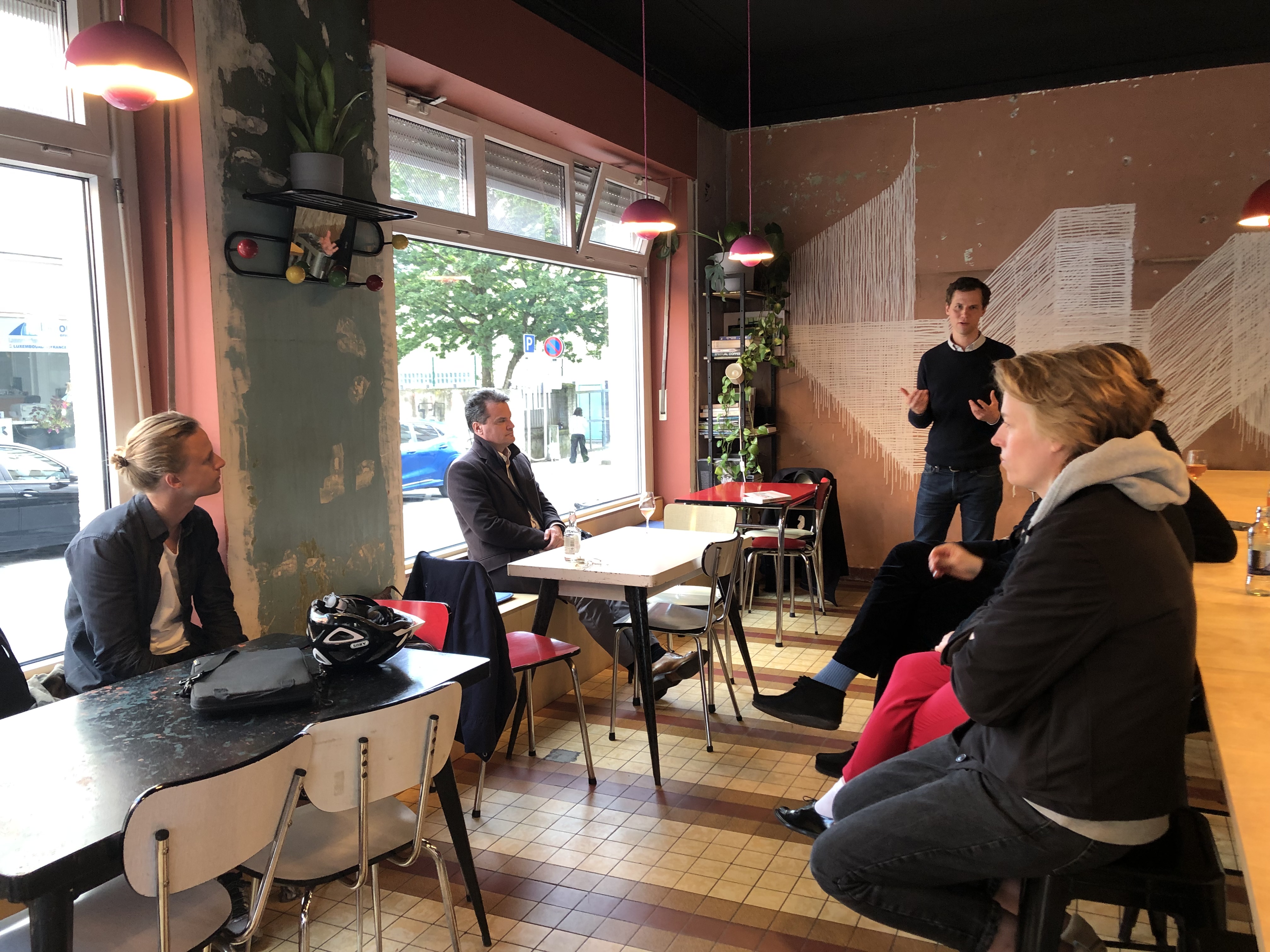 Credit: Otilia Dragan/Chronicle.lu
Credit: Otilia Dragan/Chronicle.lu
On the evening of Wednesday 12 June 2024, April Initiative, a Luxembourg-based non-profit think tank, held a presentation and discussion about the latest book of Paris-based French journalist Isabelle Rey-Lefebvre at Florence Cafe at Luxembourg-Gare.
The presentation of the book Halte à la Spéculation sur Nos Logements ! Les solutions Pour Habiter A Nouveau Les Villes (stop speculation on our housing ! the solutions to live in cities again) analysed various ideas proposed as solutions to the housing crisis in Europe through various interviews with people living in such structures or being directly involved in related projects. Certain major cities in Europe have already found certain models that work well for their citizens, such as Vienna, Europe's biggest landlord, owning 220,000 flats housing half a million people.
François de la Caffinière, real estate entrepreneur and co-organiser of April Initiative explained that the four structures Isabelle Rey-Lefebvre describes are social housing, Community Land Trusts (CLT), Organismes de Fonciers Solidaires (OFS – the French version of CLT) and cooperatives. These four structures aim to remove the element of speculation on land. Land speculation is a financial activity involving the purchase of real estate with the aim to sell it once the price increases. “It causes many problems – we see it now, it’s brought the housing market to a standstill – almost. There is an important part about removing land from speculation,” François de la Caffinière stressed.
Firstly, social housing means that municipalities buy land, develop buildings and rent them out to people for a lower price. Inhabitants have to respect certain conditions and the state takes care of the buildings, acting as a type of “landlord”.
The second type of alternative model is the Community Land Trust is a form of housing developed in the US, in which the land belongs to the community. A group can create a CLT and buy a plot of land which belongs to the group who then governs and manages it together. The individual constructions (flats, for instance) then belong to the individual people, but the land is property of the CLT. Upon selling the construction part, the individual who sells gets the profit for the construction, but not the land.
The French version of the CLT is following a similar concept: a foundation owns the land long-term, while individual people own the construction, but there is no profit made upon selling the lodging. This can be compared to Luxembourg’s Société Nationale des Habitations à Bon Marché (SNHBM), François de la Caffinière noted.
The housing cooperative is a fourth option, a community housing initiative in which the cooperative owns the land and the construction – each individual is a tenant of the cooperative of which they are a member. The rent each “tenant” pays contributes towards the credit the cooperative has. One makes no profit upon selling, although the cost of living is much lower than with other modes of housing.
The presentation continued with a presentation of excerpts from the book. Isabelle Rey-Lefebvre interviewed a CLT manager in Brussels, who noted that such alternative forms of communal housing, co-funded by the state, can solve the problem of long waiting lists for people needing affordable housing (even those with large families) and provide “comfortable”, “economical” and “ecological” solutions. A critical urbanist, however, told the book’s author that OFS leads to issues such as a power imbalance between the housing managers (the foundation) and the tenants. Inhabitants almost do not get involved in the planning and management of communal living. There are many cooperatives in Switzerland and Barcelona, François de la Caffinière added, noting the fact that the concept would need to be adapted to the countries’ specific housing market and needs. He described the example of a pensioner, who wanted a smaller space for herself after her children moved out and wanted to avoid being “anonymous”. With communal areas, management activities, gardening and community help such as babysitting for neighbours, she describes her life in the “ultra-ecological” living space as a happy one, where she also received help after her knee operation.
François de la Caffinière concluded saying that, in Luxembourg, in addition to social housing and initiatives such as SNHBM, cooperatives would be a potential model, but state support would be required.
The evening continued with networking and discussions around the topics of housing in Luxembourg and potential innovations for the country's built environment.








